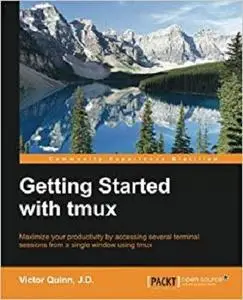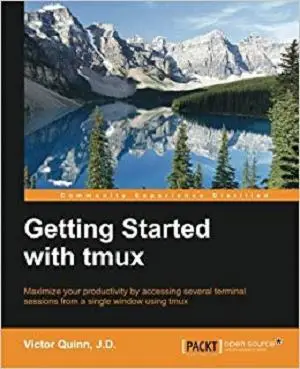Getting Started with tmux by Victor Quinn, J.D.
English | September 24, 2014 | ISBN: 178398516X | 143 pages | AZW3 | 1.74 Mb
English | September 24, 2014 | ISBN: 178398516X | 143 pages | AZW3 | 1.74 Mb
Maximize your productivity by accessing several terminal sessions from a single window using tmux
About This Book
- Discover how tmux and its powerful features maximize your terminal usage in an easy and approachable manner
- Minimize your mouse usage when switching between terminal windows to increase productivity
- Packed with real-world examples that give this concise guide an edge over the stock tmux documentation
The book is intended for software developers, DevOps engineers, and other professionals who make heavy use of the terminal in their daily workflow. Some familiarity with the terminal is useful but no prior experience with tmux or other terminal multiplexers (such as GNU Screen) is required.
What You Will Learn
- Increase productivity by using tmux rather than a mouse to switch between terminal windows
- Persist sessions on remote machines over SSH with tmux, making it easy to resume right where you left off even if your connection is terminated
- Learn how tmux can be used to create persistent dashboards for monitoring servers
- Use tmux to manage multiple terminal windows from a single one
- Maximize terminal productivity with tmux
- Maintain the state even when a terminal window is closed with tmux
- Configure tmux and customize it for your needs
We will begin with a simple introduction to tmux and learn some ways in which it can help increase productivity in your daily terminal usage. From there, we'll move on to configuring and customizing tmux to make it work, look, and feel the way that best suits your needs. Along the way, we have tutorials and screenshots aplenty so that you can follow along and avoid feeling lost. We'll also explain some of the core concepts of tmux, including the way it uses sessions, windows, and panes in order to divide content and running programs.
We'll touch on how to perform basic manipulation of text to copy and paste text from one window to another or even from one file to another. We'll learn how to use tmux for fault-tolerant SSH sessions or pair programming, and we finish by discussing some other open source tools that can be used alongside tmux to help make it even more powerful.
By the end of this book, we will have a much better understanding of tmux and its capabilities with the tools necessary to turbocharge our terminal experience.



